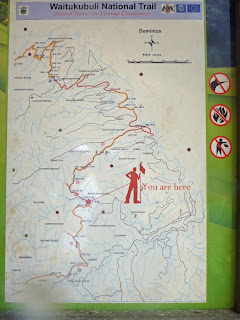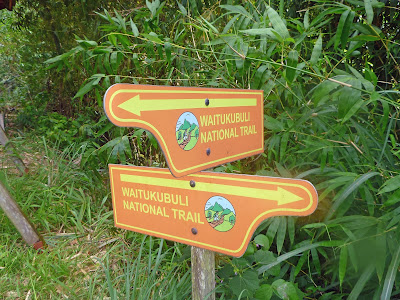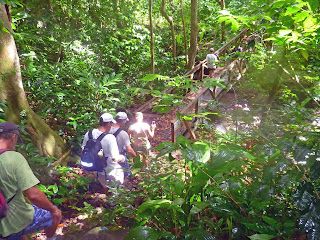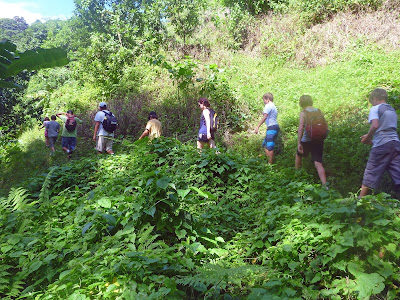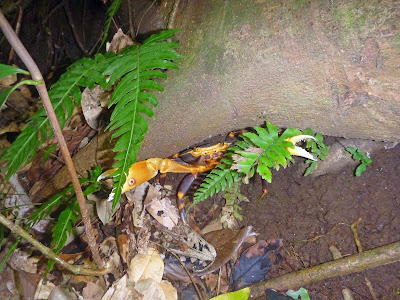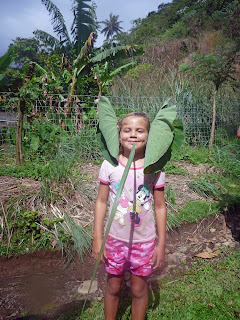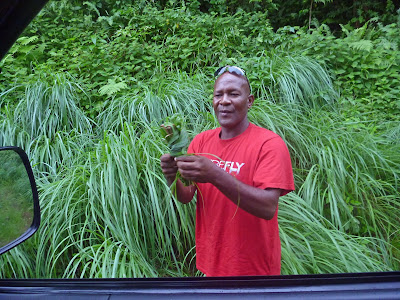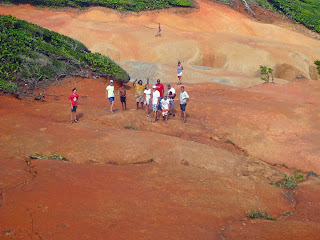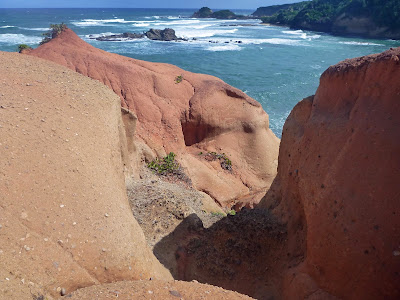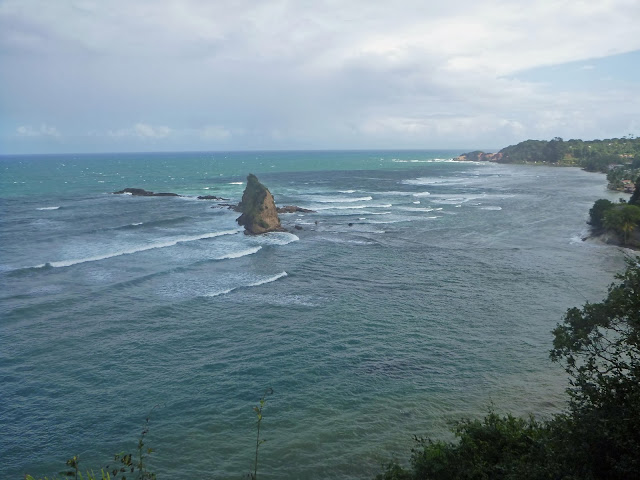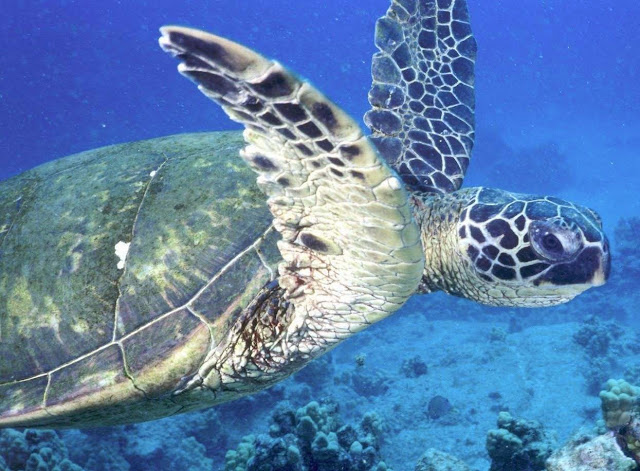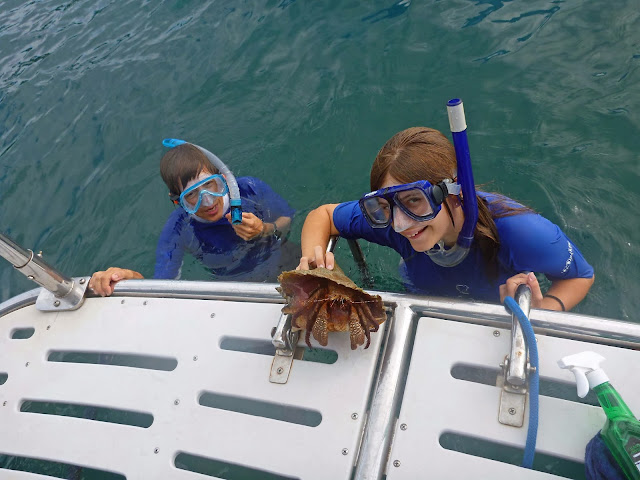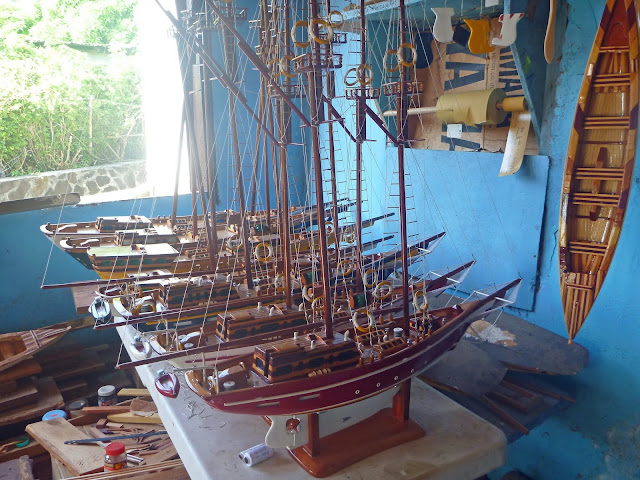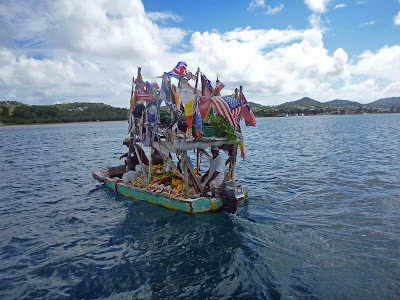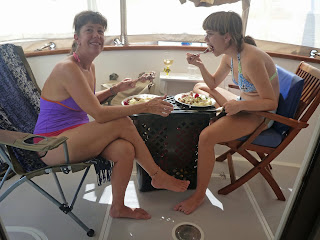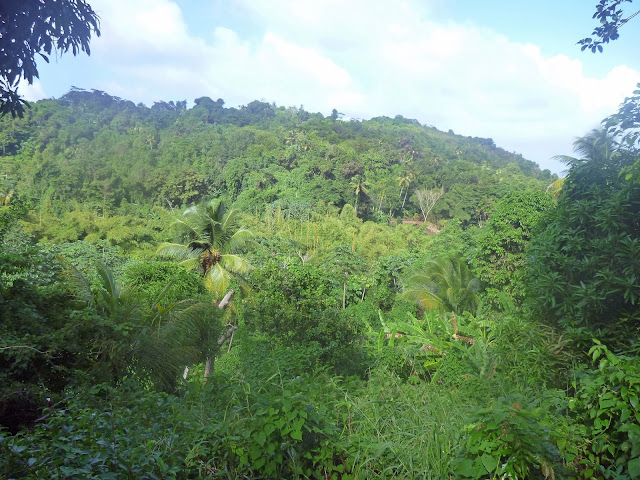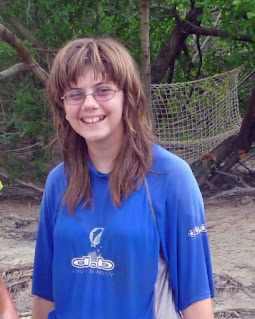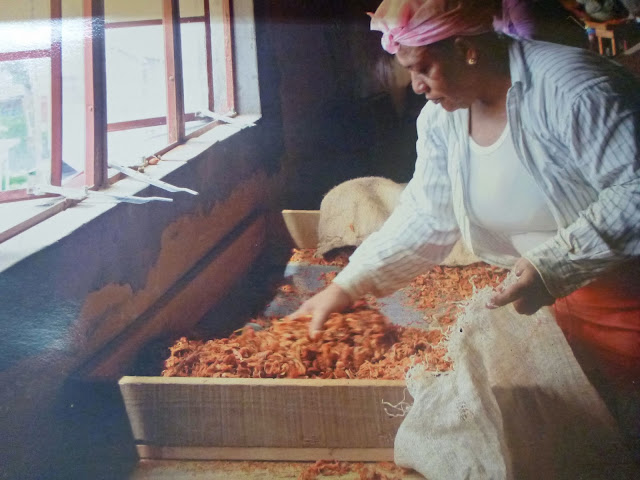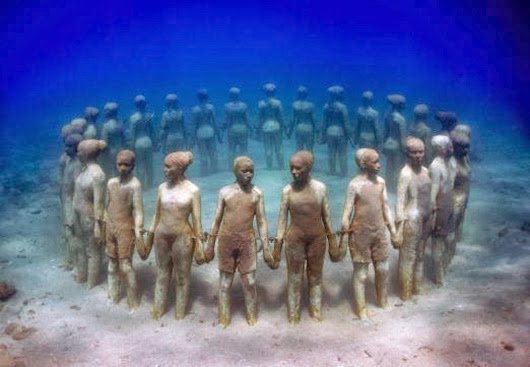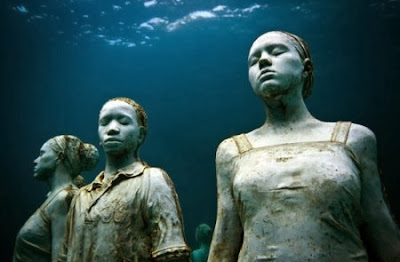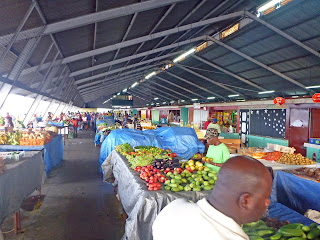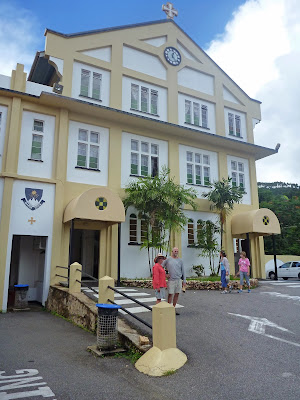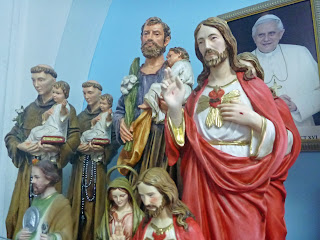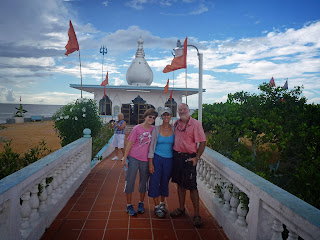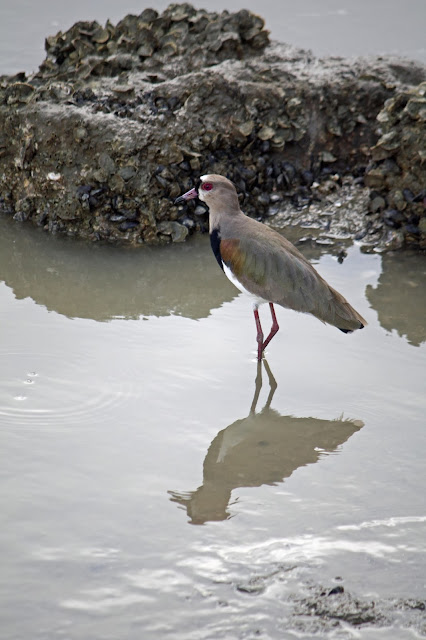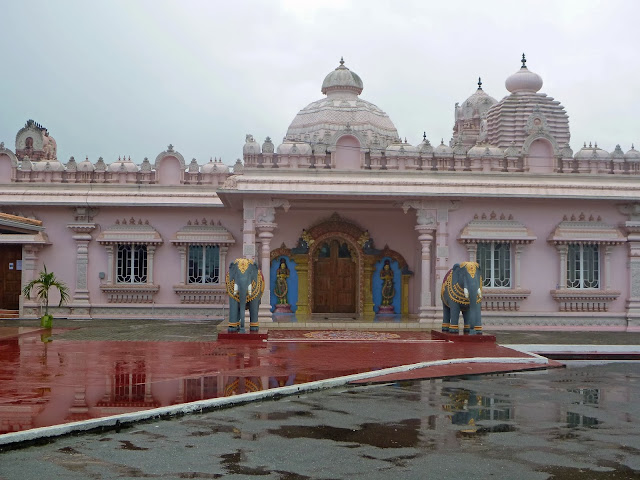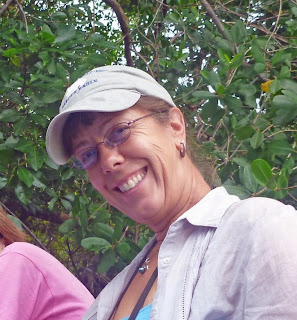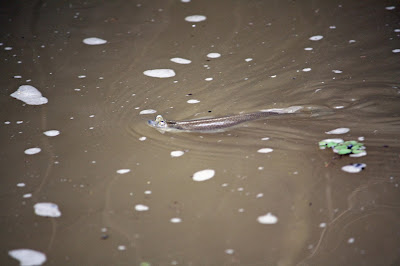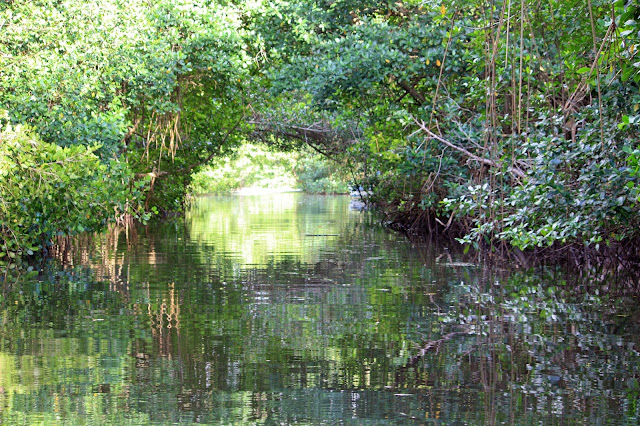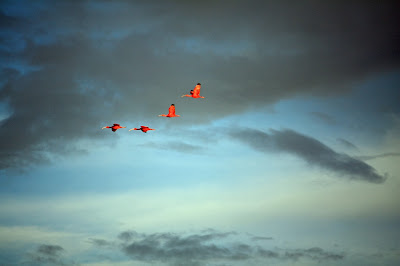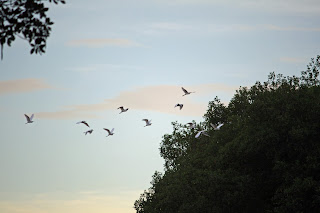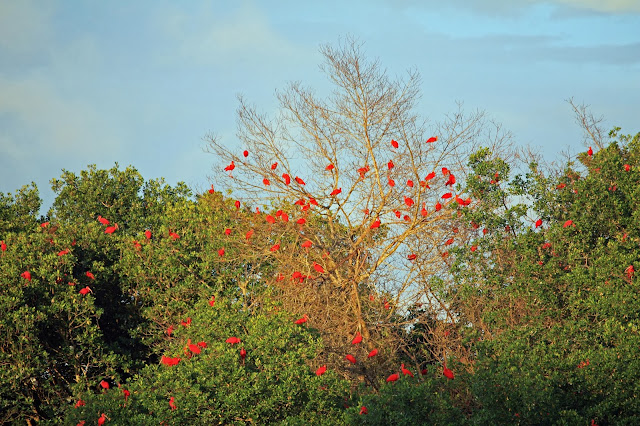We took an
organized tour to see a bit more of the area before heading north. Our tour with Jesse James of Members Only
maxitaxi took us to see the Saint Benedict monastery and the Coroni Swamp.
Mount Saint Benedict, or the Abbey of Our Lady
of Exile, is a Benedictine abbey located in north Trinidad. It was founded in
October 1912, by an order of monks from Brazil, after the Order of St Benedict
of Italy.
The Abbey complex consists of several
buildings, among them a church, a monastery, a seminary, a yoghurt factory, a
drug rehab center, and Guest House. The whole complex is situated high in the Northern
Range, north of St. Augustine. It is visible for miles around, with its
landmark tower and distinctive red-roofed buildings. We said a few prayers in the church and
looked around in the gift shop and enjoyed the commanding views. Jesse talked us into a private tour of the
guest house full of antiques and original paintings.
Our next stop was the Temple-in-the-Sea, located on the west
coast of Trinidad in the village of Waterloo near the town of Chaguanas. The
obvious “uncommon” aspect of this beautiful Hindu Temple is interesting in and
of itself, but it’s the history of how the Temple came to rest at such an
unusual spot that is truly fascinating.
The Waterloo Sea
Temple dates back to the mid-1940s when a seriously devout and determined
Indian laborer named Sewdass Sadhu built the original version on dry-land. East
Indian laborers, initially brought to Trinidad in the 1800s to work the sugar
cane fields, had few, if any, places to practice their religion formally up
until that time. Sewdass, who ran a small grocery store near his home in
Waterloo, purchased a small tract of land from the state-owned Caroni Sugar
Company upon which he built the original Temple.
No problem,
right?
Wrong.
Seems the folks
at Caroni didn’t like having a Hindu Temple around. Upon its completion in
1952, they ordered Sewdass to destroy his life’s work. He, of course, refused,
an act of defiance that earned him a $400 fine for trespassing on government
land, plus two weeks in jail; just enough time for the government to tear down
the Temple.
Sewdass’ story could’ve
easily ended right there, but this was no ordinary guy. As soon as he got out
of jail, he set about re-doing his life’s work in a place no one could quarrel
with.
“You broke the mandir on the land. Then I will
build my mandir on nobody’s land. I will build a mandir in the sea.”
Armed with a
bicycle, a leather bag, a couple of buckets and the type of determination most
of us could never hope to understand, he started building his next Temple,
stone by stone, in the middle of the sea.
He literally built the whole foundation out of stones that he stashed in
his leather bag and buckets, trekked to the sea from God-knows-where on his
bike, and piled in this spot, 500 feet from the shore, until he effectively
created his own island… by
himself! It took a good 17
years, but Sewdass did eventually realize his life’s dream again before passing
away in 1971 at the age of 68.
In 1994, when
erosion damaged the structure, the Trinidad & Tobago government stepped in
to make repairs, even going so far as to construct a bridge to make the Temple
more easily accessible from the mainland.
The Waterloo
Cremation Site is also next to the grounds of this Temple and we saw the
smoldering remains of a pyre as we passed.
We traveled
through several communities and saw other temples and mosques proving that
today’s Trinidad is truly a melting pot of cultures. Just before sunset, we arrived at the
highlight of the tour.
The 20 square
mile Caroni Swamp is the largest mangrove wetland in Trinidad. It lies just
south of capital Port of Spain, on the island’s western shore, where the Coroni
River joins the Gulf of Paria.
The swamp is home
to some 200 avian species. The most famous inhabitants are the Scarlet Ibis (Eudocimus
ruber), Trinidad’s national bird. During the day they feed in Venezuela, 11
miles away, returning to Trinidad at dusk – a spectacle that has become a
“must” on tourist itineraries. Although
we had seen these birds up close on our 2009 trip up the Manamo River in
Venezuela, we wanted to see these beautiful birds once more.
The swamp is a
maze of channels – some natural and some dredged. It’s not surprising that you
can’t just hire a boat and go out there yourself – you could so easily get
lost. However, the boat captains do these tours every day and know the
waterways intimately.
Some of the swamp was public land and a couple of locals
showed us their catch.
Although Scarlet
Ibis might be the focus of the trip, there is a vast amount of wildlife in the
mangroves. Within minutes of leaving the
jetty we saw our first wildlife – a five or six foot tree boa, sleeping in the
branches of an overhanging mangrove, immediately above the boat.
We also spotted a few birds of prey and
several types of herons and egrets as well as some small 4-eyed fish. The fish had two eyes above and two eyes
below the water. We saw 2 or 3 caiman
trying to blend in.
After a leisurely
30-minute cruise through the waterways, with our guide pointing out a wide
collection of bird species, we eventually arrived at a large area of open
water. Surrounded by mangroves on all sides and featuring several islands and
mud flats, this ‘lake’ was clearly somewhere special. Making our way across the
water, we stopped and drifted, facing a mangrove-covered island backed by the
hills of Trinidad’s Northern Range. Once the engines were switched off, it
became a spot of wonderful peace and solitude.
Six o’ clock was
rapidly approaching and the light was starting to fade. One by one we watched
bright red ibis fly overhead and land in the tree tops.
Within a few
minutes another flock arrived. Slowly, the pace picked up. So did the flock
size. Within ten to fifteen minutes it was a continuous procession of birds,
with flock sizes of ten to a hundred birds. White egrets were mixed in with the
ibis and they roosted side by side. Virtually all of the birds landed on one central
island, turning the green of the mangroves scarlet red.
Juvenile Scarlet
Ibis are black in color. The scarlet coloring, which comes from the diet of
crabs and other crustaceans, only comes when the birds have matured at two
years of age. The coloring gets darker as the bird gets older. All the early
arrivals were mature adult males. As the procession progressed, a few juveniles
could be seen amongst the adults. By the end, juveniles represented the
majority; clearly not strong enough to keep up with the adults.
As suddenly as it
had started, the spectacle came to an end. Light was fading fast and the tour
boats started up, cast off and headed back into the narrow channels of the
mangroves. A journey that had taken 30-40 minutes outbound became just 10
minutes or so on the return, showing how one has no sense of direction or
perspective in the waterways.
We returned after
dark and all agreed it was a good day.
Tom



